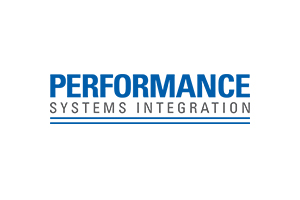Get to Know Your Fire Alarms & Monitoring System in 4 Simple Steps

This is a guest article by Beth Faris, the director of marketing for Performance Systems Integration, an OHCA business partner that provides fire and life safety services in the Northwestern US
Fire alarm monitoring in healthcare facilities is a critical safety measure that is required by various codes and regulations. When seconds count and lives depend on it, getting the fire department and other emergency responders on-site quickly is the most critical part of mitigating damage due to a fire. The fire alarm monitoring system is what makes that happen.
The fire alarm system is designed to detect any signs of fire or smoke and alert occupants of the building, including hospital staff. The monitoring system then reports that information off-site to the central station so that appropriate emergency responders are alerted. Below are four steps to help you learn more about your fire alarm system and understand the key role monitoring plays to keep your facilities safe and compliant.
- Understand Your Fire Alarm System Type
There are two main types of fire alarm systems used in healthcare facilities: conventional and addressable systems. Conventional systems are more basic and have a limited number of zones, while addressable systems are more advanced and can detect the exact location of a fire or smoke. If you haven’t already, do an audit of your system to understand which type it is. If you are currently using a conventional system, you may want to reach out to fire alarm vendors for estimates on what it might take to upgrade to an addressable system. It is possible that your facility has outgrown a conventional system due to expansion or other building or regulatory updates. - Know Who Monitors Your Fire Alarm System (and Consider a Check-in)
Healthcare facilities typically have their systems monitored by a central station monitoring company, which is staffed 24/7. The monitoring station will receive alerts from the fire alarm system and quickly dispatch emergency services if necessary. Consider whether an audit or check-in with your service provider is needed to ensure your alert communication systems and points of contact are up to date. In the recent past, fire alarm monitoring systems used phone lines to contact the fire department in the event of an alarm being triggered. But with the increased costs of phone lines, the slow response time, and the inconsistency in performance, facility managers are moving away from phone lines to a faster and more reliable solution: mesh radio technology. Mesh radio technology provides the quickest response time possible, delivering critical alarm signals in just one to three seconds, compared to telephone at 45 seconds or longer. Originally developed for the military, AES Mesh radio is a purpose-driven technology that has provided reliable central station communication for more than 40 years, unlike cellular alternatives that constantly “sunset” current technology (2G, 3G, 4G, etc.), requiring expensive equipment upgrades. - Perform Regular Maintenance and Testing
Fire alarm systems in healthcare facilities must be regularly tested and maintained to ensure they are functioning properly. This includes testing the system’s components, cleaning smoke detectors, and ensuring that the system is up-to-date with the latest codes and regulations. Make sure your team is doing these functions on a quarterly or annual basis. - Understand Integrations with Other Systems
Fire alarm systems in healthcare facilities may be integrated with other safety systems, such as sprinkler systems, to provide a comprehensive safety solution. Be sure to understand how these integrations work and test them regularly, including checking for any points of failure or upgrade needs. This work can be done by your alarm system vendor.
Fire alarm monitoring is an essential component of fire safety in healthcare facilities. By ensuring that fire alarm systems are properly installed, monitored, and maintained, healthcare facilities can protect their occupants and assets from the dangers of fire.
![Oregon Health Care Association [logo]](https://www.ohca.com/wp-content/themes/ohca2015/images/ohca-logo.png)